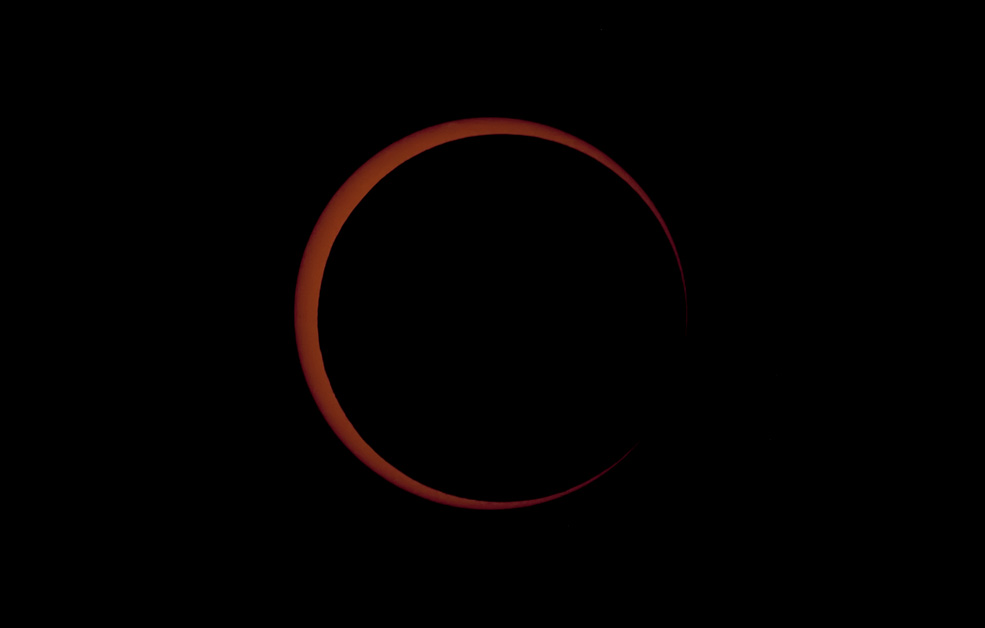
This image was taken a few minutes before the annular eclipse that took place on May 20, 2012. The reason we sometimes have an annular eclipse is because the Moon's orbit is distinctly elliptical. When the Moon is at its apogee, it is farther awayfrom Earth than it is when the Moon is at its perigee. The distance of the Moon from the Earth varies between 222,000 miles and 252,000 miles. The apparent size of the Moon also varies depending on whether it is closer to Earth (during its perigee) or farther away (during its apogee). An annular solar eclipse takes place when the Moon is near apogee at the time of the eclipse, and the apparent size of the Moon is smaller than the apparent size of the Sun. The Moon will not completely cover the Sun when it is near apogee, and a bright ring or annulus appears surrounding the outline of the Moon at the moment of maximum eclipse, so we have an annular eclipse instead of a total eclipse.
A solar eclipse can occur at new moon, but only if the Moon happens to be crossing the ecliptic at that time so that the Moon is aligned directly between the Earth and the Sun. Because the Moon's orbital plane is angled more than five degrees to the plane of the ecliptic, a solar eclipse occurs if the Moon is crossing the ascending node or the descending node in its orbit at new moon. When full moon occurs at perigee, the Moon is up to 14% larger and about 30% brighter than a full moon at apogee.
This image was taken with a Takahashi FS-78 refractor with a Thousand Oaks Optical Type 2+ solar filter. A Canon EOS Digital Rebel SLR camera was used at prime focus. The telescope was carried by a modified Takahashi EM-10 mount. The image was taken from a location near Reno, Nevada.
Solar Eclipse
May 20, 2012
Image by Sid Leach
Reno, Nevada
Recent Images.
Complete list of images.
Description of equipment used to acquire images.
Home
Feedback and comments should go to Sid